Monday, October 12, 2009
Robert B. Robeson - Miracle at Landing Zone Ross
Q – You flew hundreds of medical evacuation missions in South Viet Nam. Did you make the military your career? What have you done since leaving the military?
Yes, I served for 27½ years in the U.S. Army on three continents. I’ve been a newspaper managing editor and humor columnist and have concentrated on my professional freelance writing after retiring. My writing involvement encompasses military, religious, children’s, young adult, short story, and essays for hundreds of different publications in 130 countries.
Q –In your story, Miracle at Landing Zone Ross, you in fact, did experience a miracle as you flew and landed a disabled helicopter. Did you have other such experiences while in the war, or since?
When you’ve flown nearly 1,000 medevac missions in one year, lots of both good and bad things happen when you’re being shot at regularly by people you’ve never met. Mostly bad, though. One example (of many) occurred in early 1970 when my crew was called to evacuate four American infantrymen wounded in a mine field southwest of Da Nang. I asked the ground troops not wounded to go over the area again where they wanted me to land because, if I sat down on a mine, it could be a long time before anyone else could get out there and attempt a second time to extract them. And I mentioned to the radio operator that I didn’t appreciate loud surprises.
A week after evacuating them to LZ Hawk Hill, a first lieutenant who was leading that platoon drove a jeep 30-40 miles over an often-mined road to look for me (“Dust Off 605” call sign) at our headquarters in Da Nang. He informed me that after we lifted off that day, they discovered a “Bouncing Betty” (one of our own American anti-personnel mines captured by enemy forces and used against us). He told me that my left skid landed on top of it and mashed it down. (Eight pounds of pressure is all it takes to activate it. When this happens, it pops out of the ground about a meter high and explodes.) But this one didn’t detonate. He said the grass there was so tall they missed it before I landed. So they put C-4 (plastic explosives) around it and went down the hill to blow it in place. When it blew, this lieutenant said the top of the hill came off. They estimated that at least a 250-pound anti-tank mine had been under the Bouncing Betty…and neither of them detonated when we landed on them. These were two (including my To the Rescue article) of a large number of similar incidents that occurred frequently to me as a medical evacuation pilot.
Q – What other countries have you worked in outside the United States? Tell us a little about those experiences.
I went directly from my year in South Vietnam (1969-1970) to West Germany for four years. So I was out of the U.S. for five straight years, except for a thirty-day leave after my combat tour.
We (my wife who married me three months before leaving for Vietnam) were stationed in Landstuhl. This small German town and military base was located on a hill—that was formerly part of the WWII Siegfried Line, complete with concrete bunkers still intact—near the Ramstein Air Force Base.
We flew patients and blood to and from hospitals in France, Belgium, Luxembourg, and the Netherlands. We were also called to medically cover allied military exercises and a couple of top secret missions.
During the 1972 Olympics in Munich, my crew was stationed about ten miles away to provide medical evacuation for the area. As everyone knows, a number of Israeli athletes were killed and kidnapped by terrorists during the games. A deal was worked out with the German government to fly the terrorists and their hostages by helicopter to an airport and then out of the country. At the airport German security forces tried to rescue the hostages…but the terrorists threw hand grenades inside the helicopter when the first shots were fired and killed all aboard, including the two German pilots. We later learned that our aircraft might have been tasked by the U.S. government to have been involved in this operation, instead of the German pilots. Fortunately, for us, this never occurred.
Except for this incident, it was a wonderful four-year tour, and our only child (a daughter) was born at the hospital in Landstuhl in 1971. We were able to travel all over Europe by air, car, and bus and to meet a host of wonderful people of many nationalities.
Q – What was the most rewarding part of the work that you did in South Viet Nam?
Providing our wounded American and allied soldiers, Vietnamese civilians, and even captured and wounded enemy soldiers with an opportunity for continued existence. Risking your life continuously for people you’ve never met, and would never meet again, conveys a reward that is inexpressible. This is especially true when it is accomplished alone and under enemy fire in some hover-hole in the jungle in the dead of night, in the middle of an exposed rice paddy, or in a monsoon when no other aircraft would be flying because of the dangerous climatic conditions. We saw what the ground troops had to endure, and we wanted to do everything in our power to ensure that medical care was provided, regardless of the combat, weather, or terrain conditions.
An example of this happened in August of 1969 in the Que Son Valley about 35 miles southwest of Da Nang near the town of Hiep Duc. From August 20-22, our crew evacuated 150 wounded Americans. We had two helicopters shot up in less than 24 hours. Our medic was wounded in the throat by machine gun fire on our final mission. On August 20th at 2 a.m., we flew the last of three missions to evacuate wounded American infantrymen from Million Dollar Hill near where they’d been ambushed by North Vietnamese Army soldiers. We discovered much later that PFC Rocky Bleier, an M-79 grenadier with 1st Platoon, C-4-31, was one of our patients who was wounded twice. He later recovered from his wounds to win four Super Bowls as a running back for the Pittsburgh Steelers from 1974-80.
We didn’t know who we were carrying that night and it didn’t matter. They were all wounded Americans and it was our job to get them out of there. That’s what made our medical evacuation missions so interesting, scary, and fulfilling because you never knew whose life you’d be stepping into and who would be stepping into yours.
Q – Besides your story, Miracle at Landing Zone Ross , you have been published more than 700 times. Can you mention a few of your works? What are you presently working on?
I’ve had three articles published as chapters in two other books. Presently, I have approximately 50 articles, short stories, and poems circulating to various publications. I’m also working on a photography book with a high school basketball teammate (our La Grande, Oregon team had a 20-2 record, tied for best regular season record of the 16 teams that played in the 1960 Oregon High School State Tournament in Eugene) who was later elected as a U.S. Congressman from the state of Washington. He’s a wonderful professional photographer. I’ll be writing the copy to illustrate his mostly nature and animal photos.
I’m also working on a young adult adventure novel featuring a 19-year-old, American Indian, medical evacuation helicopter pilot protagonist during the Vietnam War. It’s based upon many true experiences some of my fellow aviators had back then and many more that could have happened to others. It involves the degradation of racism, with a coming-of-age and lost and found love theme.
In addition, I’m compiling all of my many published military and religious articles—that involved those 987 combat missions and experiences as a medevac pilot—into an autobiography. It’s a lot to deal with at one time, but I’ve been able to balance all of it pretty well.
Q – What is next for Robert Robeson?
Hopefully living long enough to complete all of these projects before the “Great Aviator in the Sky” decides to permanently cancel my flight plan.
Yes, I served for 27½ years in the U.S. Army on three continents. I’ve been a newspaper managing editor and humor columnist and have concentrated on my professional freelance writing after retiring. My writing involvement encompasses military, religious, children’s, young adult, short story, and essays for hundreds of different publications in 130 countries.
Q –In your story, Miracle at Landing Zone Ross, you in fact, did experience a miracle as you flew and landed a disabled helicopter. Did you have other such experiences while in the war, or since?
When you’ve flown nearly 1,000 medevac missions in one year, lots of both good and bad things happen when you’re being shot at regularly by people you’ve never met. Mostly bad, though. One example (of many) occurred in early 1970 when my crew was called to evacuate four American infantrymen wounded in a mine field southwest of Da Nang. I asked the ground troops not wounded to go over the area again where they wanted me to land because, if I sat down on a mine, it could be a long time before anyone else could get out there and attempt a second time to extract them. And I mentioned to the radio operator that I didn’t appreciate loud surprises.
A week after evacuating them to LZ Hawk Hill, a first lieutenant who was leading that platoon drove a jeep 30-40 miles over an often-mined road to look for me (“Dust Off 605” call sign) at our headquarters in Da Nang. He informed me that after we lifted off that day, they discovered a “Bouncing Betty” (one of our own American anti-personnel mines captured by enemy forces and used against us). He told me that my left skid landed on top of it and mashed it down. (Eight pounds of pressure is all it takes to activate it. When this happens, it pops out of the ground about a meter high and explodes.) But this one didn’t detonate. He said the grass there was so tall they missed it before I landed. So they put C-4 (plastic explosives) around it and went down the hill to blow it in place. When it blew, this lieutenant said the top of the hill came off. They estimated that at least a 250-pound anti-tank mine had been under the Bouncing Betty…and neither of them detonated when we landed on them. These were two (including my To the Rescue article) of a large number of similar incidents that occurred frequently to me as a medical evacuation pilot.
Q – What other countries have you worked in outside the United States? Tell us a little about those experiences.
I went directly from my year in South Vietnam (1969-1970) to West Germany for four years. So I was out of the U.S. for five straight years, except for a thirty-day leave after my combat tour.
We (my wife who married me three months before leaving for Vietnam) were stationed in Landstuhl. This small German town and military base was located on a hill—that was formerly part of the WWII Siegfried Line, complete with concrete bunkers still intact—near the Ramstein Air Force Base.
We flew patients and blood to and from hospitals in France, Belgium, Luxembourg, and the Netherlands. We were also called to medically cover allied military exercises and a couple of top secret missions.
During the 1972 Olympics in Munich, my crew was stationed about ten miles away to provide medical evacuation for the area. As everyone knows, a number of Israeli athletes were killed and kidnapped by terrorists during the games. A deal was worked out with the German government to fly the terrorists and their hostages by helicopter to an airport and then out of the country. At the airport German security forces tried to rescue the hostages…but the terrorists threw hand grenades inside the helicopter when the first shots were fired and killed all aboard, including the two German pilots. We later learned that our aircraft might have been tasked by the U.S. government to have been involved in this operation, instead of the German pilots. Fortunately, for us, this never occurred.
Except for this incident, it was a wonderful four-year tour, and our only child (a daughter) was born at the hospital in Landstuhl in 1971. We were able to travel all over Europe by air, car, and bus and to meet a host of wonderful people of many nationalities.
Q – What was the most rewarding part of the work that you did in South Viet Nam?
Providing our wounded American and allied soldiers, Vietnamese civilians, and even captured and wounded enemy soldiers with an opportunity for continued existence. Risking your life continuously for people you’ve never met, and would never meet again, conveys a reward that is inexpressible. This is especially true when it is accomplished alone and under enemy fire in some hover-hole in the jungle in the dead of night, in the middle of an exposed rice paddy, or in a monsoon when no other aircraft would be flying because of the dangerous climatic conditions. We saw what the ground troops had to endure, and we wanted to do everything in our power to ensure that medical care was provided, regardless of the combat, weather, or terrain conditions.
An example of this happened in August of 1969 in the Que Son Valley about 35 miles southwest of Da Nang near the town of Hiep Duc. From August 20-22, our crew evacuated 150 wounded Americans. We had two helicopters shot up in less than 24 hours. Our medic was wounded in the throat by machine gun fire on our final mission. On August 20th at 2 a.m., we flew the last of three missions to evacuate wounded American infantrymen from Million Dollar Hill near where they’d been ambushed by North Vietnamese Army soldiers. We discovered much later that PFC Rocky Bleier, an M-79 grenadier with 1st Platoon, C-4-31, was one of our patients who was wounded twice. He later recovered from his wounds to win four Super Bowls as a running back for the Pittsburgh Steelers from 1974-80.
We didn’t know who we were carrying that night and it didn’t matter. They were all wounded Americans and it was our job to get them out of there. That’s what made our medical evacuation missions so interesting, scary, and fulfilling because you never knew whose life you’d be stepping into and who would be stepping into yours.
Q – Besides your story, Miracle at Landing Zone Ross , you have been published more than 700 times. Can you mention a few of your works? What are you presently working on?
I’ve had three articles published as chapters in two other books. Presently, I have approximately 50 articles, short stories, and poems circulating to various publications. I’m also working on a photography book with a high school basketball teammate (our La Grande, Oregon team had a 20-2 record, tied for best regular season record of the 16 teams that played in the 1960 Oregon High School State Tournament in Eugene) who was later elected as a U.S. Congressman from the state of Washington. He’s a wonderful professional photographer. I’ll be writing the copy to illustrate his mostly nature and animal photos.
I’m also working on a young adult adventure novel featuring a 19-year-old, American Indian, medical evacuation helicopter pilot protagonist during the Vietnam War. It’s based upon many true experiences some of my fellow aviators had back then and many more that could have happened to others. It involves the degradation of racism, with a coming-of-age and lost and found love theme.
In addition, I’m compiling all of my many published military and religious articles—that involved those 987 combat missions and experiences as a medevac pilot—into an autobiography. It’s a lot to deal with at one time, but I’ve been able to balance all of it pretty well.
Q – What is next for Robert Robeson?
Hopefully living long enough to complete all of these projects before the “Great Aviator in the Sky” decides to permanently cancel my flight plan.
Subscribe to:
Post Comments (Atom)
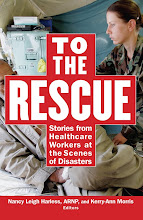
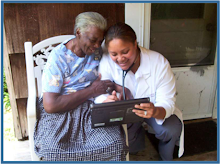












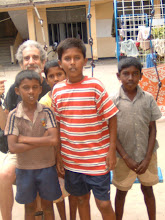





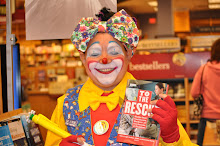



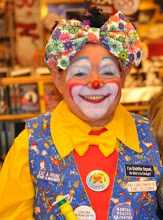




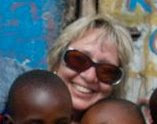


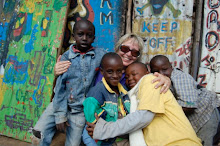






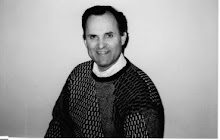






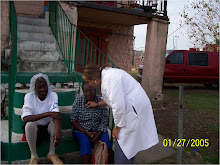






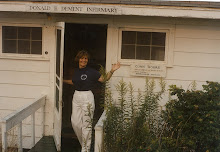




Great book our flood story was an amazing time of Team effort.I was the Emergency planning and preparedness rep in June 2008 at Mercy Medical Center cedar rapids Iowa. there were hundreds of employees who made the evacuation a success I was glad that I was able to be a part of that TEAM effort. JMCMAHON MS,RN
ReplyDelete